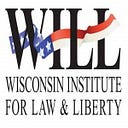Will Evers Act Quickly to Receive the Federal Relief Dollars for Private Schools?
By: Cori Petersen
On Monday, the U.S. Department of Education made funding available to state governors to distribute for education purposes. The money is called GEER funds, which stands for Governor’s Emergency Education Relief Fund. This is similar to the funds governors were authorized to distribute last spring as part of the CARES Act. However, this time around, over half of the funds designated to the governors are to be used for Emergency Assistance to Non-Public Schools (EANS).
This money would indeed be a relief to many private schools across the country, however there is one catch. Governors must apply to receive the EANS funds to distribute in their state. In states like Wisconsin where our governor has been hostile to private education, the questions are, will the governor apply? And if he does, how soon?
According to the data released Monday, there is $98,325,015 available for Wisconsin, $77,492,001 of which is designated as EANS funds, for non-public schools. $20,833,014 is supplemental GEER funds given to the governor based on the number of children under age 17 in the state, and the portion of those students who are low-income, and can be used for public education.
If Gov. Tony Evers applies to the U.S. Department of Education to receive the funds, individual schools in Wisconsin will then apply to the Department of Public Instruction (DPI) to receive their portions of the money.
Non-public schools can use EANS money for things pertaining to “reopening schools, continuing instruction, addressing learning loss, supporting educational technology and reimbursing certain coronavirus-related costs,” according to the U.S. Department of Education.
The new GEER funds are part of the Coronavirus Response and Relief Supplemental Appropriations (CRRSA) Act signed into law by President Trump Dec. 27, 2020. This law authorizes close to $82 billion in relief aid for education purposes, which is in addition to the close to $31 billion Sec. DeVos authorized in CARES Act funding last spring.
It is hard to plan for when Evers would potentially apply for the funds, as Evers and DPI have been slow to distribute the CARES Act money received in May. In fact, it took Evers from May to September to give the CARES Act money to DPI for them to distribute, even though he knew in March that he would be receiving the funds.
The U.S. Education Department released an interactive map with data through Nov. 30 that shows how much each state received in funding and how much they have spent. As of that date, Wisconsin had spent $176 million of the roughly $405 million received under the CARES Act, or about 45%. Evers has through May 2021, one year from when he received the funds, to spend them.
Under the CARES Act funding, state education agencies are required to distribute the money to local educational agencies. These local agencies are then required to provide equitable services to public and non-public schools alike. This has become quite controversial in many states, as some education agencies have created roadblocks for non-public schools, with some anecdotal evidence of this happening in Wisconsin.
If Evers wants to show that he is not for a specific education sector, be it public or private, and instead cares about the education of all students across this state, he will apply promptly for this funding and will begin considering private school applications for the financial assistance as soon as the money is in the state’s hands.
This pandemic has been hard for everyone, but especially for private schools as they have been left high and dry from state relief throughout this time, even though many have been operating in-person and are still incurring the regular costs that pertain to that. To keep them afloat and to keep kids learning, Evers must apply for those federal dollars soon.
Petersen is a writer and research associate at the Wisconsin Institute for Law & Liberty.
